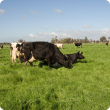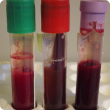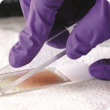Livestock disease surveillance
The enviable animal health status of Western Australia’s (WA) livestock is supported by high quality, appropriate disease investigations. These investigations enable reportable diseases (those of national and trade significance) to be ruled out, or if detected, promote early and rigorous response in line with national agreements. National reporting of WA’s disease investigations and surveillance is critical to provision of evidence to support international market access.
The Department of Agriculture and Food, Western Australia (DAFWA) provides strategic disease surveillance and testing programs for nationally important diseases as required, such as mad cow disease and bluetongue virus. Fulfilling the requirements of these programs is essential to satisfy international trading partners and to ensure continued market access. In many cases, it also allows preferential access to more lucrative markets for Australian produce.
As part of the livestock disease surveillance program DAFWA supports the Department of Health in notification and control of zoonoses- diseases that can be transmitted from animals to humans- and monitors wildlife health where it may intersect with animal health objectives.
Filter by search
Filter by topic
- Biosecurity (101) Apply Biosecurity filter
- (-) Remove Livestock biosecurity filter Livestock biosecurity
- (-) Remove Biosecurity & quarantine filter Biosecurity & quarantine
- Livestock & animals (82) Apply Livestock & animals filter
- Livestock species (69) Apply Livestock species filter
- Sheep (30) Apply Sheep filter
- Emergency animal disease preparedness (30) Apply Emergency animal disease preparedness filter
- Livestock management (29) Apply Livestock management filter
- Beef cattle (21) Apply Beef cattle filter
- Dairy cattle (17) Apply Dairy cattle filter
- Poultry & birds (12) Apply Poultry & birds filter
- Management & reproduction (12) Apply Management & reproduction filter
- Pigs (11) Apply Pigs filter
- Goats (9) Apply Goats filter
- Livestock movement & identification (7) Apply Livestock movement & identification filter
- Horses (7) Apply Horses filter
- Feeding & nutrition (7) Apply Feeding & nutrition filter
- Control methods (5) Apply Control methods filter
- Wildlife biosecurity (5) Apply Wildlife biosecurity filter
- Chemicals (5) Apply Chemicals filter
- Emergency response (4) Apply Emergency response filter
- Veterinary chemicals (3) Apply Veterinary chemicals filter
- Residues in livestock (2) Apply Residues in livestock filter
- Stockfeed (2) Apply Stockfeed filter
- Food, export & investment (2) Apply Food, export & investment filter
- Preventing residues (2) Apply Preventing residues filter
- Plant biosecurity (1) Apply Plant biosecurity filter
- Pests (1) Apply Pests filter
- Pest animals (1) Apply Pest animals filter
- Quarantine (1) Apply Quarantine filter
- Mechanical, physical and cultural (1) Apply Mechanical, physical and cultural filter
- Water management (1) Apply Water management filter
- Water (1) Apply Water filter
- Export services (1) Apply Export services filter
- Biosecurity governance (1) Apply Biosecurity governance filter
- Biosecurity and Agriculture Management Act (1) Apply Biosecurity and Agriculture Management Act filter
- Climate, land & water (1) Apply Climate, land & water filter
- Importing animals (1) Apply Importing animals filter
- Importing to Western Australia (1) Apply Importing to Western Australia filter
- Livestock research & development (1) Apply Livestock research & development filter





